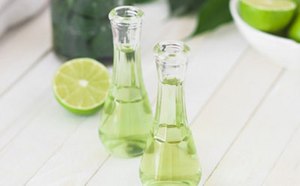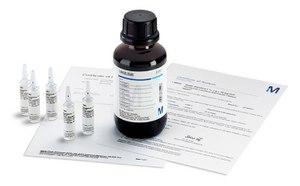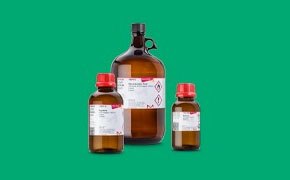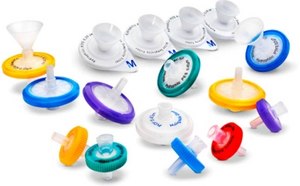Chemical Analysis for Food and Beverage Testing
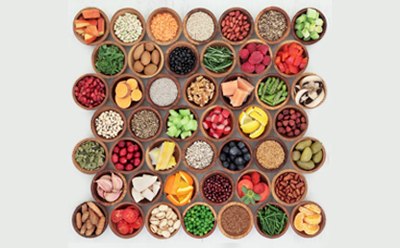
Chemical analysis of foods and beverages is performed to ensure safe consumption, product quality, and product integrity. Chemical analysis is a pre-requisite for safeguarding correct food labeling, as well as protection of consumers against adulteration, misbranding of food, and unsafe beverages. To achieve these objectives, a combined approach including suitable food legislation, increased controls by food authorities, continuous studies by food safety agencies and universities to improve knowledge about food and food processing, and enhanced responsibility of the food industry is critical.
Featured Categories
Discover diverse analytical standards and CRMs for food, cosmetics, fragrances, UV-blockers, sweeteners, essential oils, toxins, and more.
Easily determine water content in solids, liquids, gases using Aquastar® reagents. Accurate results with our water standards for titrations.
Your Solvent Source: Find the right fit with Supelco®, SigmaAldrich®, & SAFC® brands, covering analytical, lab, & biopharmaceutical uses. Order online.
Choose Millex® syringe filters: sterile, nonsterile formats. Wide membrane, housing options for HPLC, UHPLC, dissolution testing compatibility.
This combined monitoring approach is particularly important in the food and beverage industry due to the complex nature of how products come to market. For example, contamination of processed meat might come from the manufacturing process, but could also come from the animal feed or even the soil the feed was grown in.
Thus, analytical testing in the food and beverage industry also extends to environmental testing (e.g., soil and water quality, air monitoring). Analytical and instrumental methods for food and beverage analysis and quality control are implemented to test for safety, quality, and nutritional value. The complex compounds of our modern diet are analyzed in chemical testing labs in accordance to global and local regulations.
Nutritional Data for Packaged Food and Beverages
Nutritional data on packaged food is necessary to help customers make informed decisions based on dietary needs or to manage diet-related disorders. Accordingly, labeling regulations provide detailed requirements for nutritional labeling (nutrients, amounts, and caloric values) on food packages. Additional food testing by manufacturers for nutrients, like carbohydrates (sugars, saccharides), dietary fiber, organic acids, sugar alcohols, fats (fatty acids, FAMES, glycerides), proteins (amino acids, peptides), sodium, vitamins, and minerals is crucial for consistent nutrient declaration.
Contamination Testing for Food & Beverage Safety
Chemical food safety analysis allows for the safe consumption of products free of allergens, harmful pesticide residues, heavy metals, mycotoxins , and veterinary drug residues. Advances have been made in crop protection and food manufacturing procedures to enable increased food production. In parallel, the long-term effects of these advances, such as the increased use of pesticides to ensure adequate crop yield, are under constant review by government regulatory agencies to ensure they do not become harmful.
Analytical Testing for Food Adulteration and Misbranding
Food authenticity testing ensured food integrity by protecting customers from food adulteration and misbranding. Analytical methods are used to detect substitutions of ingredients or illegal chemical additions that alter or mask characteristics.
Visit our document search for data sheets, certificates and technical documentation.
Related Articles
- This article explores the analysis of fats in food and beverage products. From derivatization of fatty acids to FAMEs, to analysis of FAME isomers, and more we are your one-stop shop for all of your food and beverage analysis needs.
- Recent advances in analytical tech for heavy metal detection ensure food safety, with products and services supporting trust in consumption.
- Analyze omega 3 fatty acid profiles from fish oil capsules and salmon using GC columns for confirmatory analysis of lipid composition.
- Learn about the UV-spectrometric determination of the K268 nm value of olive oil, assessing the UV absorbance at 268 nm, to ensure quality and compliance with regulatory standards.
- Discover the K270 method for analyzing olive oil quality as per EEC Regulation 2568/91. Access detailed protocols and ensure compliance with standards.
- See All (62)
Related Protocols
- Explore how GC can be used to analyze fatty acids either as free fatty acids or as fatty acid methyl esters.
- GC Analyses of FAMEs by Boiling Point Elution
- Spectrophotometric determination of proline by the Ninhydrin method, per EN 1141 and German Food and Feed Code §64 LFBG 31.00-7.
- Explore the cost-effective and reliable smartphone-based pH determination of coffee samples using MQuant® pH test strips and the MQuant® StripScan App.
- Quick and accurate analysis of D- and L-lactic acid in dairy products using Reflectoquant® Lactic Acid Test upon reaction with lactate dehydrogenase (LDH).
- See All (16)
Find More Articles and Protocols
Related Resources
- Application Note: Determination of 8 Aminoglycosides in Pork Meat acc. to GB/T 21323-2007
Following the GB/T 21323-2007 method, an LC-MS/MS (ESI positive mode) method was developed to determine 8 aminoglycoside residues of spectinomycin, hygromycin B, dihydrostreptomycin, amikacin, kanamycin, tobramycin, gentamicin and neomycin in pork meat.
- Application Note: Determination of Glyphosate, Glufosinate, and AMPA in Green Tea by LC-MS/MS with QuEChERS Cleanup
A QuEChERS-liquid chromatography-tandem mass spectrometry (LC-MS/MS) method was established for the determination of glyphosate, glufosinate, and AMPA in green tea.
How Can We Help
In case of any questions, please submit a customer support request
or talk to our customer service team:
Email custserv@sial.com
or call +1 (800) 244-1173
Additional Support
- Chromatogram Search
Use the Chromatogram Search to identify unknown compounds in your sample.
- Calculators & Apps
Web Toolbox - science research tools and resources for analytical chemistry, life science, chemical synthesis and materials science.
- Customer Support Request
Customer support including help with orders, products, accounts, and website technical issues.
- FAQ
Explore our Frequently Asked Questions for answers to commonly asked questions about our products and services.
To continue reading please sign in or create an account.
Don't Have An Account?